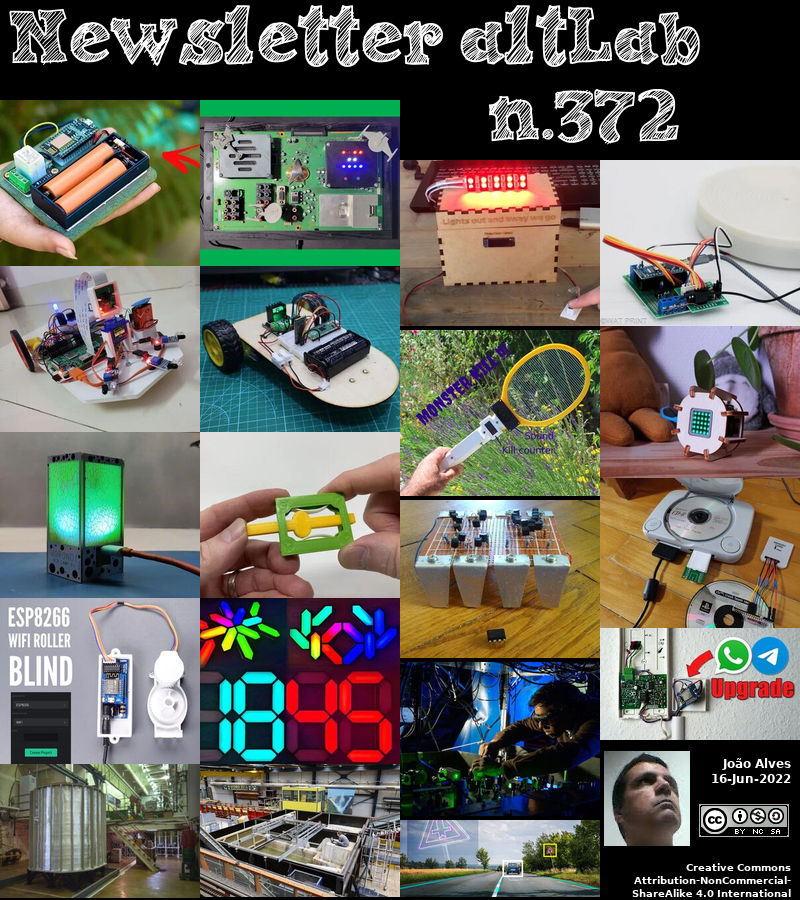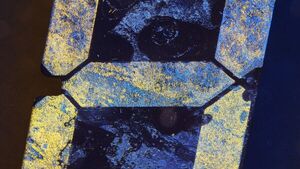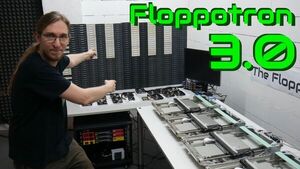2022-06-16 - Nº 372
Editorial
Esta é a Newsletter Nº 372 que se apresenta com o mesmo formato que as anteriores. Se gostar da Newsletter partilhe-a!
Todas as Newsletters encontram-se indexadas no link.
Esta Newsletter tem os seguintes tópicos:
Faz hoje anos que nascia, em 1801, o matemático e físico alemão Julius Plücker. Ele ficou conhecido pelo trabalho que sugeria o princípio de grande alcance da dualidade, que afirma a equivalência de certos tipos de teoremas relacionados. Ele descobriu também que os raios catódicos (raios de electrões produzidos no vácuo) são desviados do seu caminho por um campo magnético, um princípio vital para o desenvolvimento de dispositivos electrónicos modernos, tais como a televisão. No início sozinho e mais tarde com o físico alemão Johann W. Hittorf, Plücker fez muitas descobertas importantes na espectroscopia. Antes de Bunsen e Kirchhoff, ele anunciou que as linhas espectrais eram características de cada substância química e que isto tinha valor para a análise química. Em 1862, Plücker assinalou que o mesmo elemento pode exibir espectros diferentes a temperaturas diferentes.
Faz também hoje anos que nascia, em 1806, o médico, químico e inventor inglês Edward Davy. Ele inventou um repetidor electromagnético para retransmissão de sinais telegráficos (1836) e um telégrafo electroquímico (1838). Voltou o seu interesse para a telegrafia após ter estudado medicina e iniciado uma carreira como químico.
Faz igualmente hoje anos que nascia, em 1888, o matemático russo Alexander Friedmann. Ele foi o primeiro a elaborar uma análise matemática de um universo em expansão consistente com a relatividade geral, mas sem a constante cosmológica de Einstein. Em 1922, ele desenvolveu soluções para as equações de campo, uma das quais descreveu claramente um universo que começou a partir de um ponto singular, e se expandiu posteriormente. No seu artigo On the Curvature of Space recebido pela revista Zeitschrift für Physik em 29 de Junho de 1922, mostrou que o raio de curvatura do universo pode ser ou uma função crescente ou periódica do tempo. Em Julho de 1925, fez uma subida de balão de 7400 m para fazer observações meteorológicas e médicas.
Por fim, faz hoje anos que nascia, em 1897, o químico alemão Georg Wittig. Ele foi responsável pelos estudos de compostos orgânicos de fósforo lhe valeram uma parte (com Herbert C. Brown) do Prémio Nobel da Química em 1979. Em 1953, ele descobriu como uma família de compostos orgânicos chamados ylides poderia formar a base da reacção Wittig, que fácil e previsivelmente une dois átomos de carbono de moléculas diferentes para formar uma dupla ligação. A fiabilidade da reacção Wittig permitiu a outros químicos prosseguir e publicar descobertas sobre milhares de aplicações para ligar grandes moléculas de carbono. O processo foi utilizado para sintetizar compostos complexos tais como vitamina A, derivados de vitamina D, esteróides, e pesticidas biológicos. Devido à reacção Wittig, tais compostos podem agora ser sintetizados rotineiramente.
Em 1963 é lançada a bordo da Vostok 6, a cosmonauta soviética Valentina Tereshkova, que se tornaria a primeira mulher a viajar para o espaço. Após 48 órbitas e 71 horas, ela voltou à Terra a 19 de Junho, a Vostok 6 reentrou na atmosfera, e Tereshkova saltou de pára-quedas com sucesso para a terra após ter ejectado a 20.000 pés.
Na Newsletter desta semana apresentamos diversas noticias, artigos científicos, projetos de maker e alguns vídeos interessantes.
 João Alves ([email protected])
João Alves ([email protected])
O conteúdo da Newsletter encontra-se sob a licença  Creative Commons Attribution-NonCommercial-ShareAlike 4.0 International License.
Creative Commons Attribution-NonCommercial-ShareAlike 4.0 International License.
Novidades da Semana
Outras Notícias

USB4 ESD devices from Nexperia provide optimum balance of protection and performance
" Nexperia, the expert in essential semiconductors, today announced two Electrostatic Discharge (ESD) protection devices optimized for use with retimers and redrivers on high-speed data lines. PESD2V8Y1BSF is designed to protect USB4 (Thunderbolt) interfaces while PESD4V0Y1BCSF is intended for use with both USB4 as well as HDMI 2.1. These products use Nexperia’s proven TrEOS technology, which combines low clamping with low capacitance and high robustness. Retimers and redrivers are commonly used in the design of high-speed USB4 interfaces. However, these result in shorter board traces which have a lower parasitic inductance, an unintended consequence of which is a reduction in the overall system-level ESD robustness. The PESD2V8Y1BSF and PESD4V0Y1BCSF provide low very fast Transmission Line Pulse (vfTLP) peak clamping voltages, which are even lower than USB4 protection solutions without visible trigger voltage in the standard I(V) TLP curve." [...]
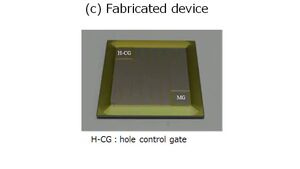
Toshiba Develops World’s First Double-Gate RC-IEGT, Reduces Switching Loss
"Toshiba Electronic Devices & Storage Corporation and Toshiba Corporation (collectively “Toshiba”) have together developed the world’s first[1] 4.5-kV double-gate reverse-conducting injection-enhanced gate transistor (RC-IEGT[2][3]). Toshiba confirmed a total power loss, when switching on and off (switching loss), reduction of 24%[4] compared with the conventional single-gate structure. Power devices, components that supply and manage power, are essential to reduce power consumption in all kinds of electronic equipment and to achieve a carbon neutral society. In the global trend to decarbonization and energy saving, IEGTs are used in a wide range of applications, such as high power inverters and high-voltage DC power transmission, where they are required to have higher current and efficiency, and lower power losses and consumption. It is difficult to reduce power loss in IEGT, as there is a trade-off whereby reducing the loss when the IEGT is on (conduction loss) increases switching loss. Toshiba developed a 4.5-kV double-gate RC-IEGT with a hole control gate (CG) separate from the main gate (MG)." [...]
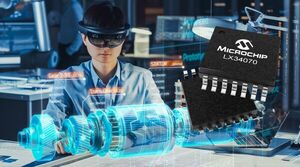
Industry’s Largest Family of Inductive Position Sensors Now Includes Solution for ISO 26262-Compliant EV Motor Control Applications
"Developers of motor control systems are rapidly replacing Hall Effect position sensors and older magnetic resolver solutions with inductive alternatives that eliminate expensive magnets and other heavy transformer-based structures so they can be integrated onto simple, compact printed circuit boards (PCBs). Extending the world’s broadest line of inductive position sensors into the EV motor control market, Microchip Technology Inc. (Nasdaq: MCHP) announces the LX34070 IC that has been purpose-built for EV motor control applications. It includes differential outputs, fast sample rates and features that make it functional-safety-ready for ISO 26262 compliance in the Automotive Safety Integrity Level–C (ASIL–C) classification. “The LX34070 inductive position sensor enables lighter, smaller, more reliable motor control solutions that meet stringent safety requirements, reduce overall system costs, and can operate seamlessly and precisely in the noisy environment of an automobile’s DC motors, high currents and solenoids,” said Fanie Duvenhage, vice president of Microchip’s mixed signal and linear analog business unit. “Designers can use the LX34070 to further streamline EV motor control designs by pairing it with other functional-safety-ready Microchip devices including our 8-bit AVR® and PIC® microcontrollers, our 32-bit microcontrollers, and our dsPIC® digital signal controllers.” The LX34070 inductive position sensor solution offers numerous advantages compared to magnetic resolvers and Linear Voltage Differential Transducers (LVDTs), at a fraction of the cost. By using PCB traces rather than transformer-based magnetic windings and coil structures, the LX34070 device has negligible size and mass compared to alternatives that weigh as much as a pound." [...]
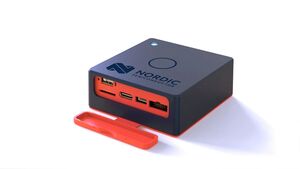
Nordic Thingy:53 brings dual-Arm Cortex-M33 processor power and embedded machine learning to rapid IoT product prototyping
"The latest addition to Nordic’s Thingy range combines the company’s flagship dual-core SoC, Power Management IC, PA/LNA range extender, and multiple sensors, with embedded machine learning firmware for the shortest route to advanced wireless proofs-of-concept. Nordic Semiconductor today announces the introduction of its ‘Nordic Thingy:53’ (“Thingy:53”), a multisensor prototyping platform with multiprotocol short range wireless connectivity and support for embedded machine learning (ML). The product is the ideal platform for building advanced wireless proofs-of-concept and prototypes with ML capabilities on the shortest development schedules. Thingy:53 is based on Nordic’s nRF5340 dual-core Arm® Cortex® M-33 advanced multiprotocol System-on-Chip (SoC) and incorporates the company’s nPM1100 Power Management IC (PMIC) and nRF21540 Front End Module (FEM), a power amplifier/low noise amplifier (PA/LNA) range extender. The prototyping platform is equipped with a rechargeable 1350 mAh Li-poly battery and multiple motion and environmental sensors. It supports Bluetooth® Low Energy (Bluetooth LE), Thread, Matter, Zigbee, IEEE 802.15.4, NFC, and Bluetooth mesh RF protocols, and comes with preinstalled firmware for embedded ML directly on the Thingy:53." [...]

STMicroelectronics reveals a ready-to-use In-Vehicle system-on-chip solution for Secure Car Access CCC Release 3 compliant
"STMicroelectronics (NYSE: STM), a global semiconductor leader serving customers across the spectrum of electronics applications, announces a new platform to accelerate the introduction of digital car keys giving consumers keyless access to vehicles via their mobile device. In addition to strengthening security, digital car keys can deliver greater owner conveniences including customizable usage privileges while continuing to secure the vehicle. Activities such as car sharing, fleet management, and vehicle rental gain benefits such as easier key issuance, usage controls, and access for valeting and servicing. Based on the most recent ST Automotive grade Secure Element hardware, the global solution, developed in collaboration with Giesecke+Devrient (G+D), supports the latest Car Connectivity Consortium (CCC) Digital Key release 3.0 standard, ensuring the highest security and protection currently available. “Leading automotive brands can now quickly build standards-based, secure car-access solutions that deliver added value for vehicle owners and users,” said Laurent Degauque, Marketing Director, Secure Microcontrollers, STMicroelectronics. “Our solution based on automotive Grade embedded secure element ensures state-of-the-art protection to lead widespread market adoption of digital keys for connected cars.” “As a long-standing partner in security and connectivity for the automotive sector, G+D contributes a wealth of experience in the field of access control for cars”, says Mario Feuerer, Global Vice President Product Management Connectivity at G+D." [...]

Renesas Announces Investment in Popular Open-Source Company Arduino to Access Huge Developer Community
"Renesas Investing $10 million in Arduino’s New Round of Series B Funding; Renesas Senior Vice President, Chris Allexandre, to Join Arduino’s Board of Directors. Renesas Electronics Corporation (TSE:6723), a premier supplier of advanced semiconductor solutions, today announced an investment in Arduino’s new round of Series B funding. The partnership with Arduino enables Renesas to make its broad range of products available for Arduino’s technology platforms used by its worldwide developer community. Arduino was first developed as an easy-to-use tool for fast prototyping aimed at students without a background in electronics and programming. Arduino expanded to offer tools for education and professionals. Now, the company is focusing on empowering a new generation of professional engineers with enterprise scale applications." [...]
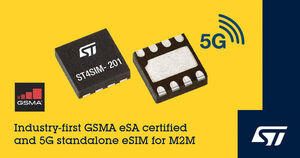
STMicroelectronics introduces 5G M2M embedded SIMs, certified to latest industry standards
"STMicroelectronics has announced the ST4SIM-201 embedded SIM (eSIM) for machine-to-machine (M2M) communication, which meets the latest standards for 5G network access, M2M security, and flexible remote provisioning and management. Compliant with ETSI/3GPP release 16, the ST4SIM-201 can connect to 5G standalone (SA) networks. It can also connect to 3G and 4G networks and low-power wide-area (LPWA) technologies such as long-term evolution for machines (LTE-M) and narrowband Internet of Things (NB-IoT). The ST4SIM-201 is certified according to the latest GSMA eUICC M2M specification, SGP.02 version 4.2, which allows remote personalization to simplify provisioning and maintenance. It is the first device to achieve GSMA eUICC security assurance (eSA), using the SGP.05 eUICC Protection Profile Version 1.1. With this, users can select the desired carrier that can be changed remotely without physical access to the device." [...]

Renesas Launches Cellular-to-Cloud IoT Development Platforms Powered by RA and RX MCU Families
"Renesas Combines its MCUs, Sensors, Analog and Power Devices with Cat-M1 Cellular Module to Enable End-to-End Cloud Connectivity. Renesas Electronics Corporation (TSE:6723), a premier supplier of advanced semiconductor solutions, today announced two new cloud development kits, CK-RA6M5 and CK-RX65N, providing a complete connectivity solution for the RA and RX Families of 32-bit microcontrollers (MCUs). The cloud kits are the first to be equipped with Renesas’ RYZ014A Cat-M1 module, a certified LTE cellular module that offers the ability to establish wireless connection between MCUs and cloud services quickly and securely without a gateway. Armed with these cloud kits, users can rapidly develop IoT cloud products and solutions without having to design their own complex circuitry and software stacks. The kits include the RYZ014A Cat-M1 Pmod™ module, multiple sensors, a high-performance MCU, hardware-based security, and a reliable software stack. The cloud kits are ready to connect to global cloud service providers such as AWS Cloud and IoT services." [...]

STMicroelectronics’ new inertial modules enable AI training inside the sensor
"STMicroelectronics (NYSE: STM), a global semiconductor leader serving customers across the spectrum of electronics applications, has introduced new inertial sensors that contain the intelligent sensor processing unit (ISPU) to power the onlife era: interacting with trained devices with intelligence moving from “on” the edge to “in” the edge. The ISM330ISN always-on 6-axis inertial measurement unit (IMU) for movement and position sensing uses its embedded intelligence to deliver unrivaled performance and accuracy for its size and power. Ideal for IoT and industrial applications, ST’s new IMU sets to accelerate response time and extend battery life in equipment such as condition monitors for predictive maintenance, as well as battery-operated asset trackers and industrial applications such as robots. The intelligence built into the ISM330ISN enables smart devices to perform advanced motion-detection functions in the sensor without interaction with the external microcontroller (MCU), thus saving power at system level. ST’s approach integrates a specialized processor, the ISPU, in a small area directly on the sensor chip, optimized for machine-learning applications. This enables the ISM330ISN module to have a 50% smaller footprint and consume 50% less power than a typical co-packaged MCU." [...]

Astra's NASA mission suffers failure, loss of weather satellites
"Rocket firm Astra Space's (ASTR.O) mission to send tiny storm-monitoring NASA satellites to orbit on Sunday failed after a second-stage booster engine shut down early in space. The failure occurred roughly 10 minutes after a successful liftoff of Astra's Rocket 3.3 at 1:43 p.m. ET (1743 GMT) from a launchpad at the Cape Canaveral Space Force Station in Florida. "We had a nominal first-stage flight. However, the upper-stage engine did shutdown early and we did not deliver our payloads to orbit," said Astra's livestream commentator Amanda Durk Frye. The rocket was carrying two small satellites designed by the Massachusetts Institute of Technology's Lincoln Laboratory to measure moisture and precipitation in tropical storm systems." [...]
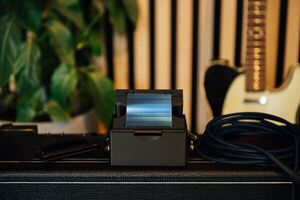
Elire Group collaborates with Microsoft on a trial for long-term archival storage
"Elire Group, with Global Music Vault, is dedicated to sourcing, safeguarding, and celebrating the world’s most valuable music, where the mission is to pass on the world’s music to the next generations forever. Microsoft is using recent discoveries in ultrafast laser optics and machine learning to store data in glass. Their research project, ‘Project Silica’, is the first-ever storage technology designed and built from the media up, specifically for the cloud. Elire Group has collaborated with Microsoft to create a dedicated Proof of Concept (PoC) glass platter, where a sample selection of some of the world’s most important music data and files is curated, ensuring it is stored in the platter for posterity. " [...]
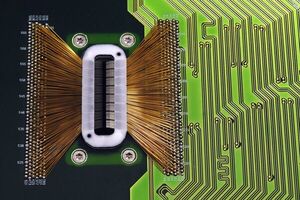
GlobalFoundries, STMicro Consider French Chip Factory Venture
"GlobalFoundries Inc. and STMicroelectronics Inc. are in talks to build a semiconductor factory in France together with the help of government funds, according to people familiar with the matter. The two companies want to take advantage of a new push from the European Commission to produce 20% of the world’s chips by 2030, the people said, who asked not to be named discussing private information. The European Union executive arm proposed the 43 billion euro ($45.3 billion) Chips Act earlier this year that would allow EU governments to give subsidies for the production of chips deemed first of a kind in the EU. No final decision has been made by the semiconductor firms, and it is unclear how large the project might be the people said. A GlobalFoundries spokesperson said it “is committed to working together with our customers, partners, and governments to help address the global chip shortage leveraging new economic partnership models which include co-investments to grow our global manufacturing capacity.” “If there is more information to share, we will do so at the appropriate time,” the GlobalFoundries spokesperson said. STMicroelectronics said it would not comment on “speculation” but said the company “welcomes the continued work by public authorities to help the semiconductor industry continue to innovate with various strategic support instruments.” The STMicroelectronics spokesperson added that the company will be “a key contributor to the increase of the European semiconductor volume production and also to the supply chain independence across European industries.” The French factory could focus on producing energy efficient chips with advanced technology, people familiar with the discussions said." [...]

Enovix Battery Cells Achieve Exceptional, Five-Minute Fast Charge
"Enovix Corporation (“Enovix”) (Nasdaq: ENVX) the leader in the design and manufacture of next generation 3D Silicon™ Lithium-ion batteries, today announced it has demonstrated the ability of its 0.27 Ah Electric Vehicle (EV) test cells to charge from 0-80% state-of-charge in as little as 5.2 minutes and achieve a greater than 98% charge capacity in under 10 minutes. “Fast charge capability can accelerate mass adoption of EVs and we’ve been able to demonstrate a level of performance that meets and exceeds many OEM roadmaps,” said Harrold Rust, Co-Founder, CEO and President of Enovix. “EV manufacturers are in pursuit of batteries that support longer range, while the public and private sectors work to increase EV driver access to fast chargers. We’re proud to support these goals to help electrify the automotive industry and demonstrate our batteries are an exciting option to power long-range, fast-charging EVs.” On June 14, 2022 Ashok Lahiri, Co-Founder and CTO of Enovix will speak at the 12th International Advanced Automotive Battery Conference (AABC) Europe in Mainz, Germany. His presentation at 11:20 a.m. (Central European Summer Time) titled “Silicon-Anode Lithium-Ion Batteries for EV Applications,” will provide an update on the company’s EV program. His presentation can be found here." [...]
Ciência e Tecnologia

Protecting computer vision from adversarial attacks
"Advances in computer vision and machine learning have made it possible for a wide range of technologies to perform sophisticated tasks with little or no human supervision. From autonomous drones and self-driving cars to medical imaging and product manufacturing, many computer applications and robots use visual information to make critical decisions. Cities increasingly rely on these automated technologies for public safety and infrastructure maintenance. However, compared to humans, computers see with a kind of tunnel vision that leaves them vulnerable to attacks with potentially catastrophic results. For example, a human driver, seeing graffiti covering a stop sign, will still recognize it and stop the car at an intersection. The graffiti might cause a self-driving car, on the other hand, to miss the stop sign and plow through the intersection." [...]

Research extends the lifetime of molecules in organic flow batteries to practical values
"Researchers at the Harvard John A. Paulson School of Engineering and Applied Sciences (SEAS), in collaboration with colleagues at the University of Cambridge, have developed a new method to dramatically extend the lifetime of organic aqueous flow batteries, improving the commercial viability of a technology that has the potential to safely and inexpensively store energy from renewable sources such as wind and solar. “Organic aqueous redox flow batteries promise to significantly lower the costs of electricity storage from intermittent energy sources, but the instability of the organic molecules has hindered their commercialization,” said Michael Aziz, the Gene and Tracy Sykes Professor of Materials and Energy Technologies at SEAS. “Now, we have a truly practical solution to extend the lifetime of these molecules, which is an enormous step to making these batteries competitive.” The research is published in Nature Chemistry. Over the past decade, Aziz and Roy Gordon, the Thomas Dudley Cabot Professor of Chemistry and Professor of Materials Science, have collaborated to develop organic aqueous flow batteries using molecules known as anthraquinones, which are composed of naturally abundant elements such as carbon, hydrogen, and oxygen, to store and release energy. Over the course of their research, the team discovered that these anthraquinones decompose slowly over time, regardless of how many times the battery has been used. In previous work, the researchers found that they could extend the lifetime of one of these molecules, named DHAQ but dubbed the “zombie quinone” in the lab, by exposing the molecule to air." [...]
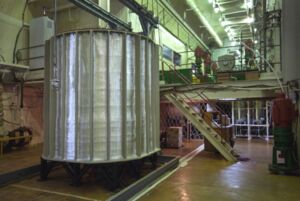
Experiment results confirm anomaly suggesting new physics possibility
"Sterile neutrino, physics fundamentals among interpretations of anomalous results New scientific results confirm an anomaly seen in previous experiments, which may point to an as-yet-unconfirmed new elementary particle, the sterile neutrino, or indicate the need for a new interpretation of an aspect of standard model physics, such as the neutrino cross section, first measured 60 years ago. Los Alamos National Laboratory is the lead American institution collaborating on the Baksan Experiment on Sterile Transitions (BEST) experiment, results of which were recently published in the journals Physical Review Letters and Physical Review C. “The results are very exciting,” said Steve Elliott, lead analyst of one of the teams evaluating the data and a member of Los Alamos’ Physics division. “This definitely reaffirms the anomaly we’ve seen in previous experiments. But what this means is not obvious. There are now conflicting results about sterile neutrinos. If the results indicate fundamental nuclear or atomic physics are misunderstood, that would be very interesting, too.” Other members of the Los Alamos team include Ralph Massarczyk and Inwook Kim." [...]

Researchers discover a new hardware vulnerability in the Apple M1 chip
"CSAIL scientists’ novel hardware attack against the Apple M1 chip defeats the last line of security while leaving no trace. William Shakespeare might have been talking about Apple’s recently released M1 chip via his prose in “A Midsummer Night’s Dream”: “And though she be but little, she is fierce.” The company’s software runs on the little squares made of custom silicon systems, resulting in Apple's most powerful chip to date, with industry-leading power efficiency. Yet despite the chip's potency, there’s been no shortage of vulnerability grievances, as fears of sensitive data and personal information leaks abound. More recently, the chip was found to have a security flaw that was quickly deemed harmless. The M1 chip uses a feature called pointer authentication, which acts as a last line of defense against typical software vulnerabilities. With pointer authentication enabled, bugs that could normally compromise a system or leak private information are stopped dead in their tracks." [...]

New approach topples major barrier to commercialisation of organic flow batteries
"Researchers from the University of Cambridge and Harvard University have developed a method to dramatically extend the lifetime of organic aqueous flow batteries, improving the commercial viability of a technology that has the potential to safely and cheaply store energy from renewable sources such as wind and solar. The process works a bit like a pacemaker, periodically providing a shock to the system that revives decomposed molecules inside the batteries. Their results, reported in the journal Nature Chemistry, demonstrated a net lifetime 17-times longer than previous research. “Organic aqueous redox flow batteries promise to significantly lower the costs of electricity storage from intermittent energy sources, but the instability of the organic molecules has hindered their commercialisation,” said co-author Michael Aziz from Harvard. “Now, we have a truly practical solution to extend the lifetime of these molecules, which is an enormous step to making these batteries competitive.” Over the past decade researchers have been developing organic aqueous flow batteries using molecules known as anthraquinones – composed of naturally abundant elements such as carbon, hydrogen, and oxygen – to store and release energy. Over the course of their research, the team discovered that these anthraquinones decompose slowly over time, regardless of how many times the battery has been used." [...]

New maps of asteroid Psyche reveal an ancient world of metal and rock
"The varied surface suggests a dynamic history, which could include metallic eruptions, asteroid-shaking impacts, and a lost rocky mantle. Later this year, NASA is set to launch a probe the size of a tennis court to the asteroid belt, a region between the orbits of Mars and Jupiter where remnants of the early solar system circle the sun. Once inside the asteroid belt, the spacecraft will zero in on Psyche, a large, metal-rich asteroid that is thought to be the ancient core of an early planet. The probe, named after its asteroid target, will then spend close to two years orbiting and analyzing Psyche’s surface for clues to how early planetary bodies evolved. Ahead of the mission, which is led by principal investigator Lindy Elkins-Tanton ’87, SM ’87, PhD ’02, planetary scientists at MIT and elsewhere have now provided a sneak peak of what the Psyche spacecraft might see when it reaches its destination. In a paper appearing today in the Journal of Geophysical Research: Planets, the team presents the most detailed maps of the asteroid’s surface properties to date, based on observations taken by a large array of ground telescopes in northern Chile." [...]
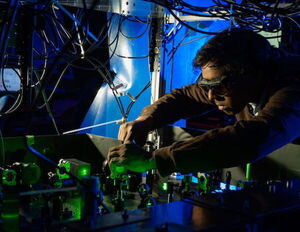
Rice lab’s quantum simulator delivers new insight
"A quantum simulator at Rice University is giving physicists a clear look at spin-charge separation, the quantum world’s version of the magician’s illusion of sawing a person in half. Published this week in Science, the research has implications for quantum computing and electronics with atom-scale wires. Electrons are minuscule, subatomic particles that cannot be divided. Despite this, quantum mechanics dictates that two of their attributes — spin and charge — travel at different speeds in one-dimensional wires. Rice physicists Randy Hulet, Ruwan Senaratne and Danyel Cavazos built an ultracold venue where they could repeatedly view and photograph a pristine version of this quantum spectacle, and they collaborated with theorists from Rice, China, Australia and Italy on the published results. Quantum simulators exploit quantum properties of real objects like atoms, ions or molecules to solve problems that are difficult or impossible to solve with conventional computers." [...]

Astronomers discover a multiplanet system nearby
"Just 33 light-years from Earth, the system appears to host two rocky, Earth-sized planets. Astronomers at MIT and elsewhere have discovered a new multiplanet system within our galactic neighborhood that lies just 10 parsecs, or about 33 light-years, from Earth, making it one of the closest known multiplanet systems to our own. At the heart of the system lies a small and cool M-dwarf star, named HD 260655, and astronomers have found that it hosts at least two terrestrial, Earth-sized planets. The rocky worlds are likely not habitable, as their orbits are relatively tight, exposing the planets to temperatures that are too high to sustain liquid surface water. Nevertheless, scientists are excited about this system because the proximity and brightness of its star will give them a closer look at the properties of the planets and signs of any atmosphere they might hold. “Both planets in this system are each considered among the best targets for atmospheric study because of the brightness of their star,” says Michelle Kunimoto, a postdoc in MIT’s Kavli Institute for Astrophysics and Space Research and one of the discovery’s lead scientists." [...]
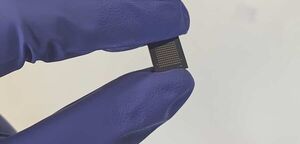
Researchers develop the world's first ultra-fast photonic computing processor using polarisation
"In a paper published in Science Advances, researchers at the University of Oxford have developed a method using the polarisation of light to maximise information storage density and computing performance using nanowires. Light has an exploitable property – different wavelengths of light do not interact with each other – a characteristic used by fibreoptics to carry parallel streams of data. Similarly, different polarisations of light do not interact with each other either. Each polarisation can be used as an independent information channel, enabling more information to be stored in multiple channels, hugely enhancing information density. First author and DPhil student June Sang Lee, Department of Materials, University of Oxford said: ‘We all know that the advantage of photonics over electronics is that light is faster and more functional over large bandwidths. So, our aim was to fully harness such advantages of photonics combining with tunable material to realise faster and denser information processing.’ In collaboration with Professor C David Wright, University of Exeter, the research team developed a HAD (hybridized-active-dielectric) nanowire, using a hybrid glassy material which shows switchable material properties upon the illumination of optical pulses." [...]

Diamonds Are for Quantum Sensing
"Researchers at the University of Tsukuba use ultrafast spectroscopy to measure tiny changes in magnetic fields using nitrogen-vacancy defects in diamonds, paving the way for more accurate quantum sensors for spintronic computers. Tsukuba, Japan—Scientists from the University of Tsukuba demonstrated how ultrafast spectroscopy can be used to improve the temporal resolution of quantum sensors. By measuring the orientation of coherent spins inside a diamond lattice, they showed that magnetic fields can be measured even over very short times. This work may allow for the advancement of the field of ultra-high accuracy measurements known as quantum metrology, as well as "spintronic" quantum computers that operate based on electron spins. Quantum sensing offers the possibility of extremely accurate monitoring of temperature, as well as magnetic and electric fields, with nanometer resolution. By observing how these properties affect the energy level differences within a sensing molecule, new avenues in the field of nanotechnology and quantum computing may become viable." [...]
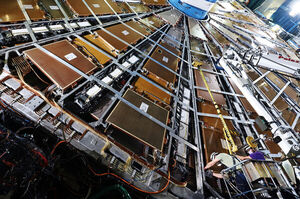
Ten years after the Higgs, physicists face the nightmare of finding nothing else
"Unless Europe’s Large Hadron Collider coughs up a surprise, the field of particle physics may wheeze to its end A decade ago, particle physicists thrilled the world. On 4 July 2012, 6000 researchers working with the world’s biggest atom smasher, the Large Hadron Collider (LHC) at the European particle physics laboratory, CERN, announced they had discovered the Higgs boson, a massive, fleeting particle key to their abstruse explanation of how other fundamental particles get their mass. The discovery fulfilled a 45-year-old prediction, completed a theory called the standard model, and thrust physicists into the spotlight. Then came a long hangover. Before the 27-kilometer-long ring-shaped LHC started to take data in 2010, physicists fretted that it might produce the Higgs and nothing else, leaving no clue to what lies beyond the standard model. So far, that nightmare scenario is coming true." [...]

New material paves the way for remote-controlled medication and electronic pills
"Biomedicines are produced by living cells and are used to treat cancer and autoimmune diseases among other things. One challenge is that the medicines are very expensive to produce, something that limits global access. Now researchers from Chalmers have invented a material that uses electrical signals to capture and release biomolecules. The new and efficient method may have a major impact in the development of biomedicines and pave the way for the development of electronic pills and drug implants. The new material is a polymer surface* which at an electrical pulse changes state from capturing to releasing biomolecules. This has several possible applications, including use as a tool for the efficient separation of a medicine from the other biomolecules that cells create in the production of biological medicines." [...]

Graphene dust not harmful, study finds
"Graphene-based particles released from polymer composites after abrasion induce negligible health effects. Under the leadership of Empa, an international research team of the Graphene Flagship project conducted a study on the health risks of graphene-containing nanoparticles and recently published the results in Journal of Hazardous Materials. Graphene-related materials (GRMs) are often used to reinforce polymers. In small concentrations of up to five weight percent, GRMs can significantly enhance the strength, electrical conductivity and thermal transport of composites for a variety of applications. However, being a relatively new set of materials, graphene and GRMs need to be carefully assessed in order to identify potential adverse effects prior commercialization. In a new study, a large interdisciplinary team of scientists funded by the EU's Graphene Flagship project prepared a composite of polyamide 6 (PA6, also known as Nylon-6) – a thermoplastic polymer used in several sectors such as automotive and sports equipment – with 2.5 percent reduced graphene oxide (rGO), a form of graphene that enhances the reinforcement of the polymer." [...]
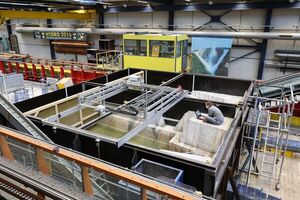
EPFL scientists take modeling to new heights
"EPFL’s Platform of Hydraulic Constructions has been commissioned to model a future hydropower plant in Australia. As part of its work, the team has built an outsize replica on campus. In the modeling world, 1:25 is an extremely useful scale factor. It’s what lets you display your favorite toy cars or tin soldiers in your living-room window. And importantly, it’s how engineers at EPFL’s Platform of Hydraulic Constructions (PL-LCH) scale down life-size structures to models that can fit inside a building on the Lausanne campus. If you wanted to view their latest model from above, however, you’d need a ladder." [...]
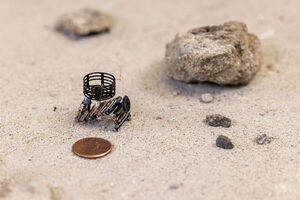
UCLA engineers create single-step, all-in-one 3D printing method to make robotic materials
"Advance shows promise for “meta-bots” designed to deliver drugs or aid rescue missions. A team of UCLA engineers and their colleagues have developed a new design strategy and 3D printing technique to build robots in one single step. A study that outlined the advance, along with the construction and demonstration of an assortment of tiny robots that walk, maneuver and jump, was published in Science. The breakthrough enabled the entire mechanical and electronic systems needed to operate a robot to be manufactured all at once by a new type of 3D printing process for engineered active materials with multiple functions (also known as metamaterials). Once 3D printed, a “meta-bot” will be capable of propulsion, movement, sensing and decision-making. The printed metamaterials consist of an internal network of sensory, moving and structural elements and can move by themselves following programmed commands." [...]
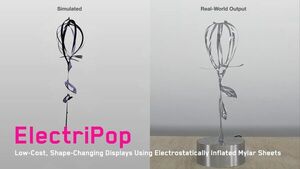
ElectriPop: Low-Cost, Shape-Changing Displays Using Electrostatically Inflated Mylar Sheets
"Shape-changing displays offer a uniquely embodied and highly aesthetic mode of computer-human communication, perfect for uses such as ambient displays, embodied avatars, interactive art, and educational experiences. By giving elements form, these applications can become more engaging with increased physicality. However, practical shape-changing displays continue to be elusive, and there is considerable ongoing research in this area, both in the HCI community and beyond. Ideal approaches might be considered to have the following properties: low-cost, fast-actuating, silent-operation, compact, robust, and easy to fabricate. In this work, we describe ElectriPop, a new fabrication workflow and computational tool that allows sheets of metalized mylar to be cut and then “inflated” into complex 3D forms using electrostatic charge. This is achieved by carefully placing and nesting various cuts, slits, and holes such that mylar elements repel from one another." [...]

Glimpses of Quantum Computing Phase Changes Show Researchers the Tipping Point
"Tuning a quantum computer’s measurement rate provides hints of quantum phase transition. Researchers at Duke University and the University of Maryland have used the frequency of measurements on a quantum computer to get a glimpse into the quantum phenomena of phase changes – something analogous to water turning to steam. By measuring the number of operations that can be implemented on a quantum computing system without triggering the collapse of its quantum state, the researchers gained insight into how other systems — both natural and computational — meet their tipping points between phases. The results also provide guidance for computer scientists working to implement quantum error correction that will eventually enable quantum computers to achieve their full potential. The results appeared online June 3 in the journal Nature Physics. When heating water to a boil, the movement of molecules evolves as the temperature changes until it hits a critical point when it starts to turn to steam." [...]
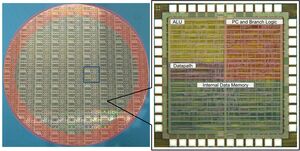
The First High-Yield, Sub-Penny Plastic Processor
"It took a major redesign for cheap flexible chips to reach their promise. For decades, hopeful techies have been promising a world where absolutely every object you encounter—bandages, bottles, bananas—will have some kind of smarts thanks to supercheap programmable plastic processors. If you’ve been wondering why that hasn’t happened yet, it’s that nobody has built working processors that can be made in the billions for less than a penny each. It hasn’t been for want of trying; in 2021 Arm reproduced its simplest 32-bit microcontroller, the M0, in plastic, but even this couldn’t hope to meet the mark. The problem, according to engineers at the University of Illinois Urbana-Champaign and at British flexible-electronics manufacture PragmatIC Semiconductor, is that even the simplest industry-standard microcontrollers are too complex to make on plastic in bulk. In research to be presented at the International Symposium on Computer Architecture later this month, the transatlantic team presents a simple yet fully functional plastic processor that could be made at sub-penny prices." [...]
Projetos Maker
Diversos Projetos interessantes.

PicoMemcard
"PicoMemcard allows you to build your own supercharged PSX Memory Card that can be connected to your computer via USB in order to transfer saves directly to/from your PSX. You can use it to repurpose broken/counterfeit Memory Cards creating a better one using only a Raspberry Pi Pico. Features - Able to faithfully simulate PSX Memory Card - USB connection to import/export saves - Allows to copy saves to/from any other memory card (using original PSX file manager) - Allows to play burned CDs (thanks to FreePSXBoot) - Cheaper than an original memory card Bill of materials - Raspberry Pi Pico (around $5) - One of: - Custom PicoMemcard PCB - Broken/Counterfeit/Original PSX Memory Card (counterfeit ones can be found on AliExpress for around $2-3) - PSX/PS2 Controller Cable - Nothing, if you are a mad man and feel like soldering cables directly to your PSX (would not recommend). Basically anything that will allow you to interface with the memory card slot pins will do. If you have a broken contoller you can cut off the cable and use that since controllers and memory cards share the same bus. Of course, plugging your memory card into the controller slot will prevent you from using 2 controllers at the same time." [...]

Race Lights Reaction Timer
"This project is a small game you can play with another player. You can time your reaction speed and compete with your friend. The game is inspired by the start lights of a formula 1 race. Earlier Iterations: The images above are of earlier iterations of certain components and the casing. In the original idea, the powerbank was located inside the casing. But in the final product, I placed it outside so that the user can charge or swap it out easily." [...]
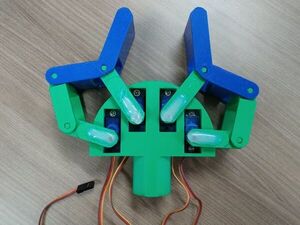
Mechanical gripper prosthesis with myoelectric sensor contol
"Print a mechanical prosthetic grip on your 3D printer and use a myoelectric sensor to control it. The driving idea of this project is to study different methods of controlling a robotic prosthesis of a human upper limb. Since this prosthesis aims to improve the quality of life of people with upper limb amputations, helping to perform routine tasks considered simple for non-amputees. It is hoped that this study will help in the dissemination of the technologies that will be studied and that in the future it will open doors for the improvement or discovery of new technologies. Robotic prosthetics, to many people, may still seem like something out of science fiction movies, a technology still unattainable. However, there are already prostheses on the market, especially those for upper limbs, of the most diverse types and purposes." [...]

ShroomBox - IoT Mushroom Fruiting Chamber with Blynk
"Control temperature, humidity, CO2, and light with an automated open-source mushroom fruiting chamber using ESP32 and Blynk 2.0. Mushroom growing is becoming an increasing trend as people become aware that growing their own food is very important. Mushrooms, on the other hand, need specific conditions for successful growth. As part of this project, we've created an automated chamber for fruitingmushroomsnamed ShroomBox. It enables remote monitoring and control over the fruiting process for people with a tight schedule. This simplifies the cultivation process and achieves a better yield in less time." [...]
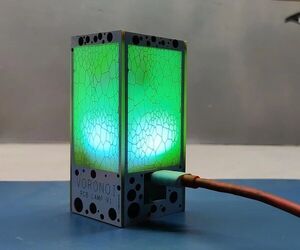
Voronoi Diagram Based PCB Lamp V2
"Hey Everyone what's up. So here's one of theprevious projects I made a few weeks ago. Voronoi Diagram-Based PCB Lampis an RGB Lamp made entirely from PCBs, I used four rectangular PCBs with two square PCBs to make the body of the LAMP. RGB Color in this Lamp can be changed by pressing the button on top of it, this button is connected with the lower square board that contains the RGB LEDs and the Attiny85 Microcontroller. Supplies - Attiny85 SOIC8 - Custom PCBs- Main Square MCU PCB and Rectangular PCB - WS2812B LEDs (2020 Package) - USB Type C Port - Diode M7 - 2R0 Resistor 1206 Package - Arduino as ISP Setup for flashing the MCU - SMD button - UC202 Connector and wire harness - Solder wire" [...]
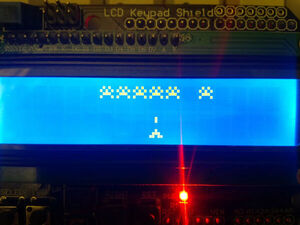
Space Invaders Like Game on 1602 LCD Character Display
"There is no need to introduce a legendary “Space Invaders” game. The most interesting feature of this project is that it uses text display for graphical output. It is achieved by implementing 8 custom characters. Game Design The screen does not allow to control separate pixels and provides just two lines of text which is not enough for game. But it allows to implement up to 8 custom characters. The trick is to process each 5x8 pixels character as two 5x4 pixels game cells." [...]
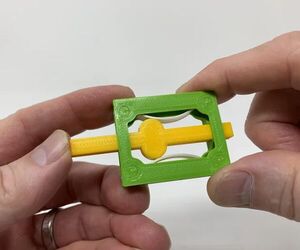
A 100% 3D Printed Linear Snap Action Mechanism.
"Sometimes you look at a mechanism such as "A 100% 3D Printed Linear Snap Action Mechanism" and wonder what could this be useful for? Well, mechanical snap action mechanisms have a number of uses including toggle switches and numerous process control applications. To illustrate the use of mechanisms such as this, along with the included design and assembly video, I've included a second video of how I used this mechanism to provide mechanical reversing in an automaton design of mine. I designed this mechanism to provide linear mechanical hysteresis for the automaton, and published a video of the prototype model on YouTube, whereupon which a number of educators messaged and commented that they would like to be able to recreate this mechanism in their classrooms, so here is the snap action model in an easy to 3D print cutaway form. As mentioned, the design and assembly process for this mechanism is illustrated in the first video, and I've included the Autodesk Fusion 360 file "Snap Action, Linear.f3d" for those interested in editing the design. I 3D printed all parts at .15mm layer height with 20% infill." [...]
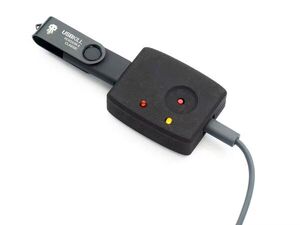
USB Killer Detector
"Detect USB Kill flash drives before they harm your hardware. UBS Kill is a pen-testing device that looks like a regular USB flash drive. When these flash drives are connected into a USB port of, for example, your personal computer, then the 5V found in the USB port is converted into about 220V. Needless to say that, in matters of seconds, the computer can be physically damaged, resulting in the spending of money and resources to replace broken parts. KeyFeatures - Detects these flash drives in seconds. - Fits in your hand and pocket." [...]
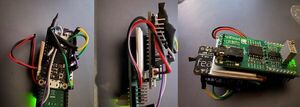
Arduino based EEG Sleep Monitoring
"Following on from looking at commercial products for sleep monitoring using EEG, I thought I’d take a look at more DIY based approaches using some open source sensor boards and a basic microcontroller. This is quite a classic module in the EEG space as it’s one of the first that was manufactured to support commercial BCI products and toys. Over the years there’s been a lot of DIY projects made using this board. The issue I have is that the chip on the board is kind of a black box because the signals that come out of it are already digitally processed – although in a roundabout way you can obtain the raw signal too. You wouldn’t really learn much and the options to tweak anything at a hardware level are limited. I do have one of these boards and they are incredibly small, which is great for making a headset but if your soldering isn’t great you might struggle with connecting the relevant wires." [...]
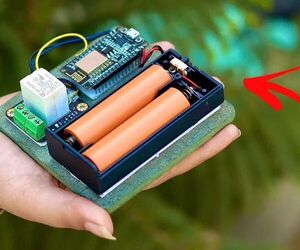
How to Build a Simple DIY Home Automation System
"Home automation is a term used to describe the process of automating certain tasks and devices around the home. This can include tasks such as turning on the lights when you enter a room, or setting the thermostat to a certain temperature. Home automation systems can be as simple or as complex as you like, and there are many different products on the market to suit different needs. In this tutorial, we will show you how to build a simple DIY home automation system using a NODEMCU and a few other components. you can monitor and control your home’s energy usage, security system, and much more. Nowadays, home automation is becoming increasingly popular as it can offer homeowners a lot of benefits." [...]
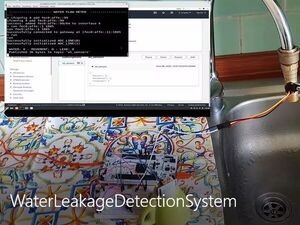
Water Leakage Detection System
"System that monitors a tap with the goal to detect wheter there is a leak of water and in case of leak notify it through an acoustic signal. Introduction Nowadays, the problem of wasting water is a very big problem and water is starting to become a scarce commodity. In the European Union, more than half of the population lives in communities of more than 150, 000 population equivalent (PE), generating a daily amount of 41.5 million m3 of wastewater. For that reason one, of the big challenges for smart cities of the future is to reduce the waste of water in urban areas. The system proposed here aims to detect a leak of water in a tap and alert someone nearby via an acoustic signal who can then close the tap and stop the leak. The system monitors the water flowing out of the tap by means of a water flow sensor and movement is detected in front of the tap via the PIR sensor." [...]

DIY Lab Bench Power Supply
"So hey guys in today's article we are going to make a DIY lab bench power supply circuit. As you know using this circuit we can adjustable the voltage but we can also adjust the current at 10 amperes. And if you are reading this article then I bet you. You are an "Electronics Hobbyist" Who may be thinking of buying a new lab bench power supply. Or maybe you are thinking of making a circuit of your own. That's why you came here to read this article." [...]

Custom NanoLeaf Lights! DIY, Wireless, Modular, Arduino, 3D Printed!
"I am very excited to share this project with you because it looks absolutely beautiful and is super easy to make! It's a NanoLeaf inspired wireless Arduino RGB LED lights project that not only allows you to create any custom NanoLeaf shape you want but also use the same identical segments to create a 4-digit display, where you can display the time, temperature, humidity, or pretty much anything you want. All using one single modular segment and for a cheap affordable price! I have made a video that goes over the whole project and explains each step very clearly. So if you want a video version, I highly recommend watching the video as it is much easier to follow. The instructable thumbnail image shows some of the things you can do with the segments in this project." [...]

Abacusynth: A Hardware Synthesizer
"Abacuysnth is a synthesizer inspired by an abacus, the ancient counting tool used all around the world. Just like an abacus is used to learn the fundamentals of math, the Abacusynth can be used to explore the building blocks of audio synthesis. For more on the process, check out my posts on the fabrication, spinners, electronics, and code. And you can check out a digital implementation of the same idea here. Abacusynth is a synthesizer inspired by an abacus, the ancient counting tool used all around the world. Just like an abacus is used to learn the fundamentals of math, the Abacusynth can be used to explore the building blocks of audio synthesis." [...]
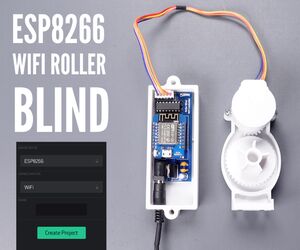
DIY Motorized WiFi Roller Blind - ESP8266 & Blynk
"In this project we will see how to control a roller blind via a smartphone application. The reason why I realized the project was to use a roller blind to change the background in the video footage and to be able to easily control the roller blind via my smartphone. In this project, a breadboard circuit is shown for basic readers and a printed circuit board circuit for users who want a more useful prototype. Check out the video to see how it works... First of all, we need some 3D parts to be used like providing roller blind movement. We talked about 3D parts in the next step. In this section, we listed what we should use as hardware for electronic components and mechanisms: - Wemos D1 Mini WiFi board was used to provide motor movements wirelessly and programming - Hobby stepper motor 28BJY-48 and driver ULN2003 was used to movement the roller blind up and down - A 608zz bearing was used to ensure the smooth movement of the gear required for the roller blind - A mini breadboard was used to build the circuit - Several jumper wires were used to provide the pin connections - A 9V adapter was used to power the circuit - L7805 voltage regulator was used as 5V is required for the microcontroller - A few capacitors are needed for the voltage regulator - Finally a few screws are needed for assembly A few extra components are needed for the printed circuit board prototype, mentioned these components in the PCB step." [...]
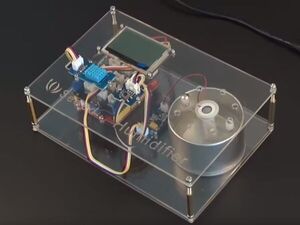
DIY a Simple Automatic Humidifier
"When the humidity falls below the safe values, it will automatically open the humidifier. What You Need: - Arduino/Seeeduino - Grove – Temp&Humi Sensor - Grove – Button - I2C_LCD - Grove – Water Atomization Grove - Water Atomization is a perfect module for you to develop an atomizer or an atomizer module in your applications easily. With just a few simple steps, you can prototype an atomizer. It has Grove interface which makes it easy to be integrated into plenty of applications. A humidifier is a basic device it can be built with, you can develop more advanced and interesting projects with digital scent technology and any other situations in which atomization required. " [...]
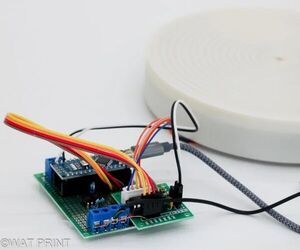
3D Printed Timelapse/3D Scanning Turntable
"An affordable Arduino Turntable designed for Time lapse photography. Changing the gearing and code it can also be used for Photogrammetry/3D scanning or Video. The turntable operates on the move shoot move principle in the Timelapse and Photogrammetry modes where the camera is triggered via the sync cable. The electronics can be adjusted based on personal needs, I for example opted for 2xOptocouplers to simultaneously trigger two separate cameras. I would describe this as an intermediate level project,basic experience with Arduino and 3D printing as well as the ability to solder are required. Supplies Hardware - 3D printed parts set, about 18 hours and 210g of material." [...]
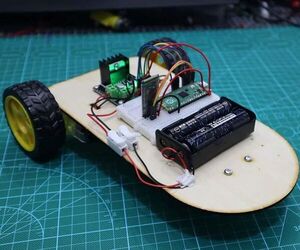
Simple Bluetooth Controlled Car - Raspberry Pi Pico
"Hello fellow makers and tinkerers, I am back with another simple, easy-to-follow project based on the Raspberry Pi Pico. Using easy-to-find components, we will be making a 2-wheel drive the motor car controlled through a Bluetooth module on an android APP made by MIT app inventor. The application is straightforward, which allows you to connect to the car through Bluetooth. Once connected, you can use the arrow buttons to control the movement and direction of the car. It comes with a slider to control the speed of the motor. In this instructable, we will go through everything for you to recreate this project, make something similar, expand on it, and make it more awesome." [...]
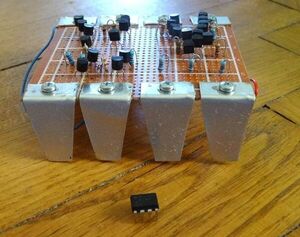
The Famous NE555 Timer-IC, Original and a Bit Larger
"Integrated circuits (IC) are indispensable today. They're made up of many thousands of electronic components (transistors, diodes, resistors, etc.) and still don't take up much more space than a fingernail. One of the most well-known ICs is the NE555 timer chip. The NE555 integrated circuit is an active electronic device that turns an output on or off under certain conditions. It is very suitable for time controls and clock generators and is sometimes even used in switched-mode power supplies." [...]
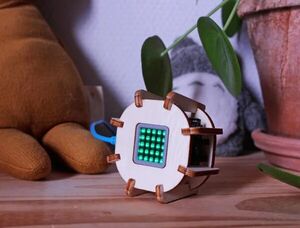
Labfab's CO2 Sensor
"The CO2 sensor is a collaborative project initiated by the Labfab (Rennes - France) in partnership with the MCE (Rennes - France). The objective is to propose a sensor, easy to mount, which allows CO2 measurement in a room. The result of the CO2 concentration threshold calculation is displayed in ppm (parts per million) and is color coded to determine if there is sufficient aeration. This sensor help you to determine the periods of ventilation in closed spaces, in particular in the school context. Indeed, a high concentration of CO2 in a classroom has the possible consequence of a drop in concentration and even a state of drowsiness. This issue was raised during the Covid-19 health crisis when a correlation was established between the concentration of CO2 in a room and the transmission of the virus." [...]
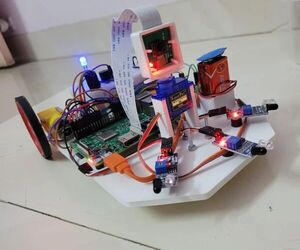
IOT Based Smart Security Surveillance Robot
"PROJECT ABSTRACT : Now we as humans have always been intrigued by non living stuff moving around. Starting with throwing stones around we have now come at a point where we make those planes around the sky. On their own too. It helps us a lot when we are able to get to places wherein we can’t by ourselves. Firstly it compensates for our laziness and then it eliminates all the physical constraints that we might encounter. So it is always in need to bring automation in our lives to make daily stuff easy and admittingly fun to do." [...]
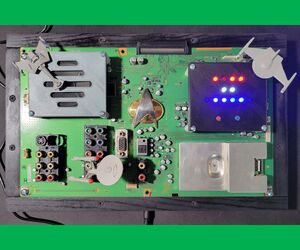
Themed Binary Digital Clock With Arduino Nano and DF Player Mini
"Turn an old circuit board into a digital clock. The clock is in binary with 4 bits of LEDs for hours and 6 bits of LEDs for minutes. The clock includes two LEDs for a seconds blinker. The clock also includes audio with Star Trek sound clips that play at certain times. The clock is driven by an Arduino Nano that also drives a DF Player Mini connected with an 8 ohm speaker for playing the audio. The clock also has two buttons, one for setting the hours and one for setting the minutes." [...]

ATtiny85-Motor
"These are all the files that I used to make a ATtiny85 circuit that controls a motor's speed using a potentiometer, and also has indicator LEDs to qualitatively show the speed as you turn the potentiometer. One thing to note is that for some reason the footprint for the diode D1 is backwards in KiCAD so when I first tried building this circuit the transistor would get very hot and after reversing the diode, the circuit worked properly. " [...]
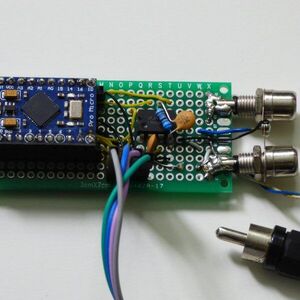
Lightpen to USB HID interface
"Bring CRT displays and light pens into 21st century This project is about interfacing light pen from the 80s with modern operating system using USB HID. This is the result of my other research project: Lightpen support for Retro Pie What is a light pen? Read here. About 25 years ago I was a happy user of a Commodore C128 with a 14" TV a my primary display. It was a CRT as there was no other kind. Recently I have dug out some of the old computer stuff from the storage." [...]

Ultimate Mosquito Swatter Mod for Gamer: Add Kill Counter, Sound, Rechargeable Battery.
"Where I live, from spring to autumn we have to compete for territory against tiger mosquito. Local stores offer a impressive list of anti mosquito devices, candles, including sophisticated traps sold a few hundred euros, I even found one sold 2000 - this give you an idea of how desperate people are to get rid of those invaders. One of my favorite weapon to fight against mosquito is this cheap electric swatter, but to make this fight even more rewarding I thought I should upgrade my weapon. In this instructable, I will show and explain how to hack an electric swatter to : - add electronic to detect kills. - add a 4 digit counter. - make it usb rechargeable." [...]
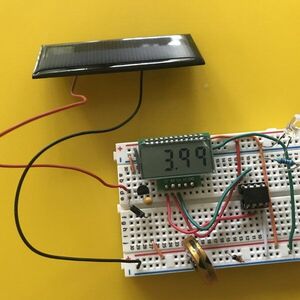
Klara, a solar LCD creature
"Solar-powered creature that reacts to energy with animations on a 7-segment LCD. It can also blink! Klara is a solar-powered creature with a simple, unlit 7-segment LCD display and an ATTiny85 microcontroller. It stores her energy in a pair of 1F supercapacitors so she can stay awake for a few more hours after sundown. When the sun shines and her reserves are full, she plays lively animations on her LCD display. As her energy declines, the animations slow down and freeze into still images, until they disappear altogether." [...]
Secção Videos
Videos interessantes.
That's all Folks!



